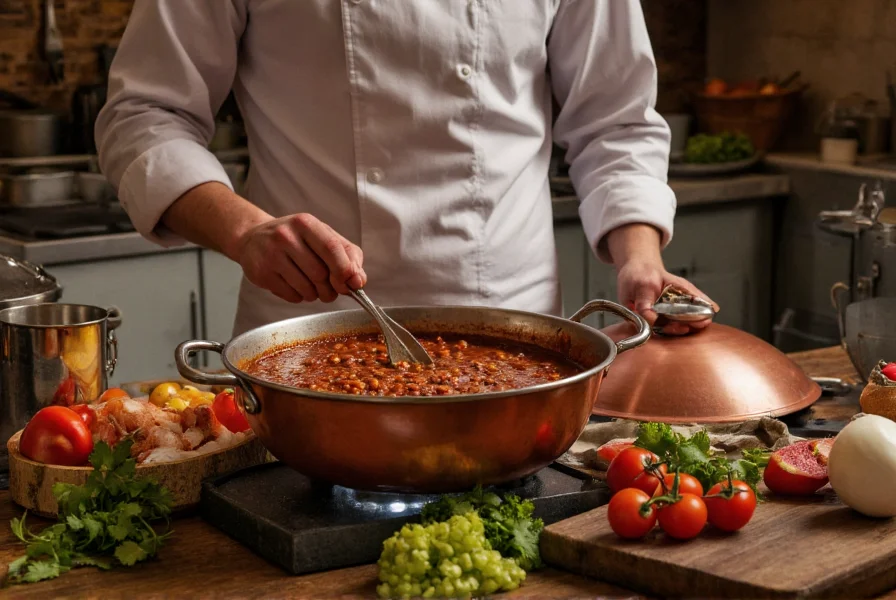When searching for the perfect chili dining experience, understanding what defines an authentic chili house becomes essential. These specialized restaurants have become cultural institutions across America, each offering unique interpretations of this beloved dish while maintaining core elements that satisfy chili enthusiasts. Whether you're exploring Texas-style beef chili, Cincinnati's distinctive spice blend, or New Mexico's pepper-focused variations, a quality chili house delivers consistent flavor profiles that honor regional traditions while showcasing culinary expertise.
Defining Characteristics of Authentic Chili Houses
The most respected chili houses share several key attributes that distinguish them from generic restaurants serving chili as just another menu item. First and foremost, they prioritize ingredient quality, sourcing specific chili peppers, premium meats, and fresh spices rather than relying on pre-made mixes. The cooking process typically involves slow simmering for several hours, allowing flavors to develop complexity that instant preparations simply cannot match.
Authentic establishments often feature regional specialties that reflect local culinary traditions. For example, Texas chili houses typically focus on meat-forward recipes with minimal beans, while Midwestern versions might incorporate unique spice blends. The atmosphere frequently pays homage to the dish's history, with decor elements that reference chili's origins in 19th century American cow camps and immigrant communities.
Regional Variations Across American Chili Houses
Understanding regional differences helps identify what makes each chili house unique. The following table outlines major regional styles you'll encounter when exploring authentic chili establishments:
| Regional Style | Key Characteristics | Signature Ingredients | Recommended Accompaniments |
|---|---|---|---|
| Texas Red | Meat-focused, no beans, deep red color | Beef chuck, ancho and chipotle peppers | Crackers, onions, shredded cheese |
| Cincinnati | Spicy-sweet profile, spaghetti base | Ground beef, cocoa, cinnamon, Worcestershire | Spaghetti, oyster crackers |
| New Mexico | Pepper-forward, green or red varieties | Fresh or dried New Mexico chilies, pork | Tortillas, rice, beans |
| Midwestern | Thick, hearty, often includes beans | Ground beef, kidney beans, tomato base | Cornbread, sour cream |
What to Look for in a Quality Chili House
Discerning the best chili house near you requires attention to specific indicators of quality. Start by examining the menu structure—establishments dedicated to chili typically offer multiple preparation styles or regional variations rather than a single generic option. The presence of house-made ingredients, such as freshly ground chili powder or homemade stock, signals commitment to authentic preparation.
Observing the cooking process can provide valuable insights. Many quality chili houses prepare their signature dish in visible pots or kettles, allowing customers to see the slow-simmering process that develops complex flavors. Staff knowledge about chili history and preparation methods often correlates with authentic establishments, as employees at serious chili houses typically understand the nuances between regional styles.

Evaluating Chili Quality During Your Visit
When experiencing a chili house for the first time, employ these evaluation techniques to assess authenticity and quality. Begin with visual inspection—the ideal chili should have a rich, deep color appropriate to its regional style, with visible meat chunks and a thick but not pasty consistency. The aroma should be complex and inviting, with discernible layers of spice rather than a single overpowering note.
Taste evaluation should consider multiple dimensions: the balance of heat and flavor, meat tenderness, depth of spice profile, and overall harmony of ingredients. Authentic chili houses typically offer samples before ordering larger portions, allowing customers to assess quality before committing. Pay attention to how the establishment handles customization requests—while traditionalists might resist major alterations, quality restaurants should accommodate reasonable dietary preferences without compromising the dish's integrity.
The Cultural Significance of Chili Houses
Chili houses represent more than just restaurants—they're cultural touchstones reflecting America's diverse culinary heritage. Originating from 19th century cow camps along the Chisholm Trail, these establishments evolved from simple trail food to regional specialties that tell stories of immigration, cultural exchange, and local adaptation. Many historic chili houses have become community landmarks, hosting generations of customers and preserving culinary traditions that might otherwise be lost.
The enduring popularity of chili houses demonstrates how food traditions can adapt while maintaining core identity. Modern establishments often blend traditional preparation methods with contemporary culinary techniques, creating innovative interpretations that honor the past while appealing to current palates. This evolution ensures that the chili house experience remains relevant while preserving the essence of what makes these restaurants special.











 浙公网安备
33010002000092号
浙公网安备
33010002000092号 浙B2-20120091-4
浙B2-20120091-4